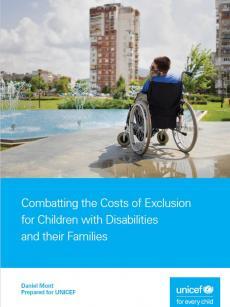
Combatting the Costs of Exclusion | UNICEF
Full Report: Combatting the Costs of Exclusion for Children with Disabilities and their Families (unicef.org)
Highlights
The Convention on the Rights of the Child and the Convention on the Rights of Persons with Disabilities (CRPD) emphasizes that all children have the right to be full members of society, and be included in all forms of participation inside the home and out in the community. Unfortunately, many children with disabilities are not afforded this opportunity. Instead, they face many barriers that exclude them from society. Compared with other children, children with disabilities are less likely to receive an education, less likely to be employed as adults, more likely to be victims of violence, less likely to start their own families and participate in community events, and more likely to live in poverty.
The exclusion of children with disabilities affects not only them, but imposes costs on the whole community. If these children lack the opportunity to be productive, society loses out on what they could have produced. The barriers faced by people with disabilities can also create more responsibilities for their family members, which can limit their opportunities to work or get an education.
Moreover, the impact of exclusion extends beyond the economic cost. If people with disabilities are absent from public discourse, the community cannot benefit from their ideas. If they are excluded from political participation, the government cannot truly represent the interests of all citizens.










Add new comment